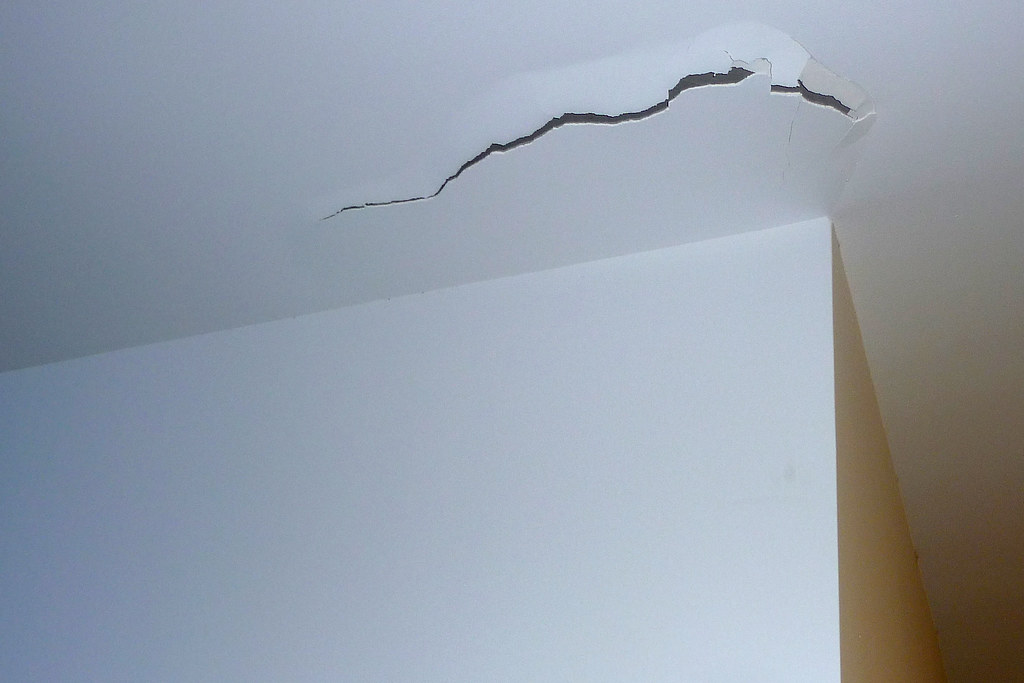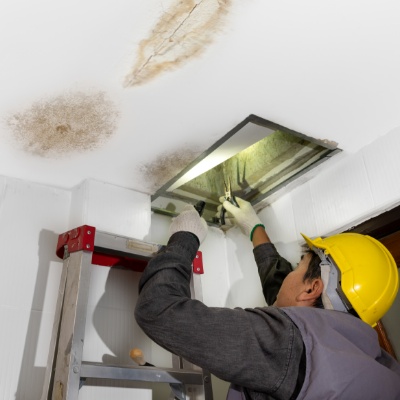Ceiling cracks can be a concerning sight for any homeowner, signaling potential structural issues or environmental factors affecting your residence. In this comprehensive guide, we’ll delve into the intricacies of the Causes of Ceiling Cracks, exploring both common and less-known factors that contribute to this phenomenon. Gain insights into prevention and solutions to maintain a structurally sound and aesthetically pleasing home.

The Dynamics of Ceiling Cracks: Unraveling the Mystery
Understanding the Gravity: Why Do Ceiling Cracks Occur?
Ceiling cracks can emerge for various reasons, spanning from natural settling of a home to more severe structural concerns. Identifying the cause is essential for effective resolution and preventing further damage.
The Impact of Settling: A Common Culprit
1. Natural Settling of the Structure
One of the most common causes of ceiling cracks is the natural settling of the building over time. As a structure ages, it adjusts and settles into its foundation, leading to minor shifts that can manifest as cracks in the ceiling. While often considered normal wear and tear, continuous settling may result in visible cracks.
2. Changes in Humidity and Temperature
Fluctuations in humidity and temperature can cause building materials, such as wood and drywall, to expand and contract. This constant movement can create stress on the ceiling, leading to the development of cracks. Managing indoor climate conditions through proper ventilation and insulation can help mitigate this issue.
Structural Issues: Beyond Surface Level
1. Foundation Settling or Shifting
Ceiling cracks may also be indicative of more serious structural issues, such as foundation settling or shifting. When the foundation undergoes significant changes, it can cause the entire structure to move, leading to cracks in the ceilings and walls. Seeking professional evaluation is crucial for addressing foundation-related concerns.
2. Overloaded Ceiling Joists
Ceiling joists play a vital role in supporting the weight of the ceiling and upper floors. Overloading these joists, either by adding excessive weight or through structural modifications, can strain the ceiling and result in cracks. Understanding load-bearing capacities and avoiding excessive weight can help prevent this issue.
Water Intrusion: A Stealthy Culprit
1. Roof Leaks
Water intrusion from roof leaks is a common cause of ceiling cracks. If water penetrates the roof, it can damage the ceiling materials and weaken the structure, leading to cracks. Regular roof inspections and prompt repairs are essential for preventing this type of damage.
2. Plumbing Leaks
Leaking pipes or plumbing fixtures located above the ceiling can contribute to water damage and the formation of cracks. Timely detection and repair of plumbing leaks are crucial to preventing structural issues and maintaining the integrity of the ceiling.
Construction and Material Issues: Quality Matters
1. Poor Workmanship
Ceiling cracks may result from poor construction practices, such as inadequate framing or improper installation of drywall. Ensuring that construction work meets industry standards and hiring qualified professionals can minimize the risk of structural issues.
2. Low-Quality Materials
The quality of building materials used in construction directly impacts the longevity and durability of the structure. Choosing high-quality materials and finishes can reduce the likelihood of ceiling cracks and other related issues.
Read too: Exploring What Causes Ceiling Cracks and How to Address Them: Unveiling the Mysteries
Addressing the Issue: Solutions for Ceiling Cracks
1. Professional Inspection
If you observe ceiling cracks, especially if they are extensive or recurring, seeking a professional inspection is crucial. A qualified structural engineer or contractor can assess the severity of the issue, identify the root cause, and recommend appropriate solutions.
2. Repairs and Reinforcements
Depending on the cause and extent of the cracks, repairs may include patching, retexturing, or even reinforcing the ceiling structure. Professional contractors can implement targeted solutions to address both cosmetic and structural concerns.
3. Preventive Measures
Implementing preventive measures is essential to avoid future ceiling cracks. This may involve regular maintenance, addressing water intrusion promptly, and ensuring proper ventilation and climate control within the home.
Conclusion: Navigating the Causes and Solutions for Ceiling Cracks
In conclusion, understanding the Causes of Ceiling Cracks is pivotal for homeowners seeking to maintain a structurally sound and aesthetically pleasing living space. Whether attributed to natural settling, structural issues, water intrusion, or construction factors, addressing the root cause early can prevent further damage.
Regular inspections, maintenance, and timely repairs are key practices for preserving the integrity of your home. By staying informed and proactive, homeowners can ensure that their ceilings remain not only visually appealing but structurally resilient for years to come.

